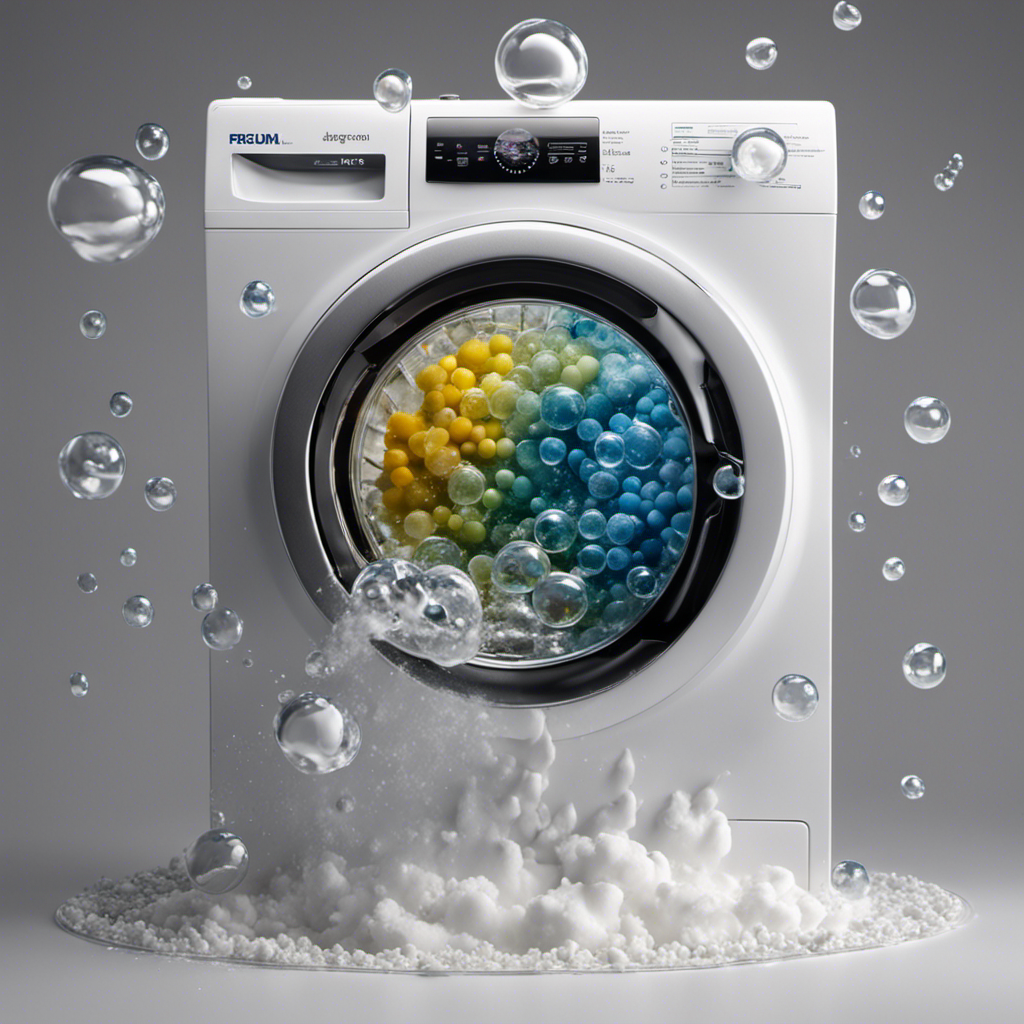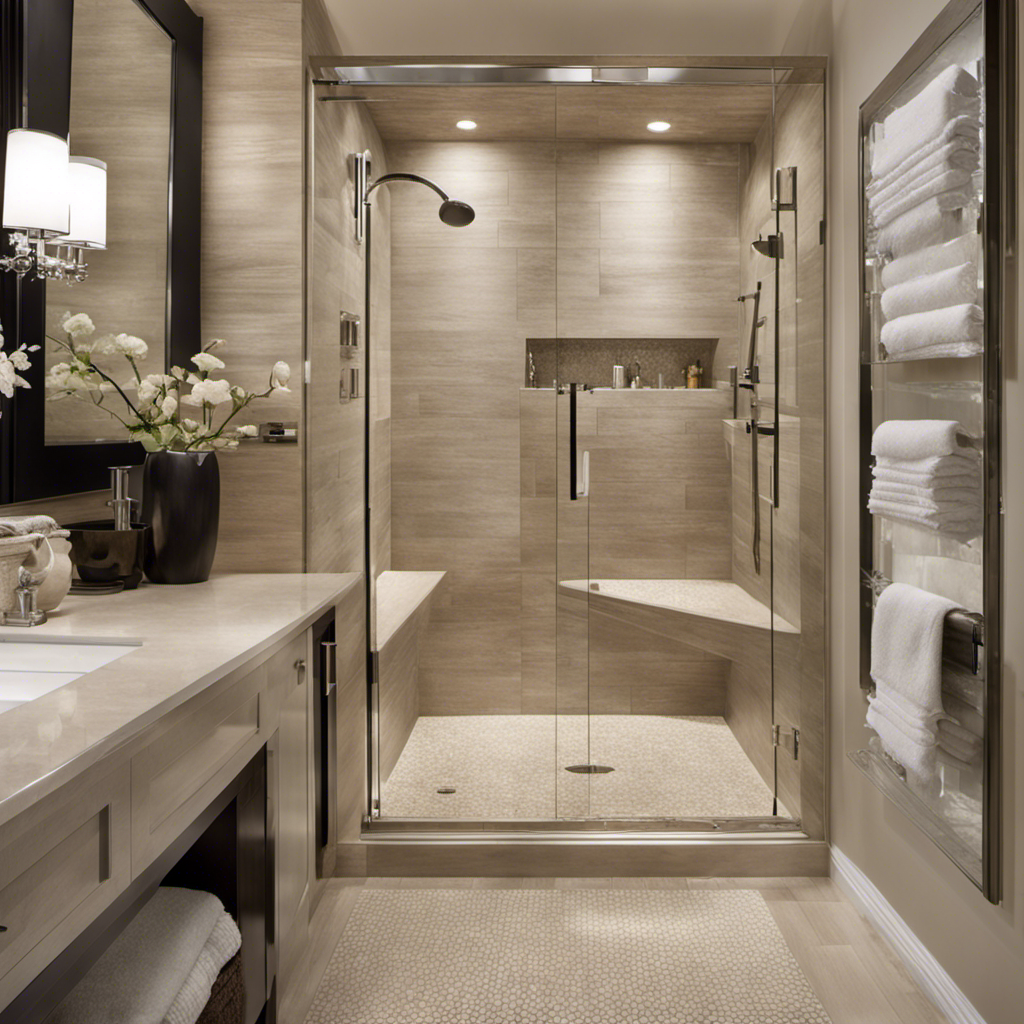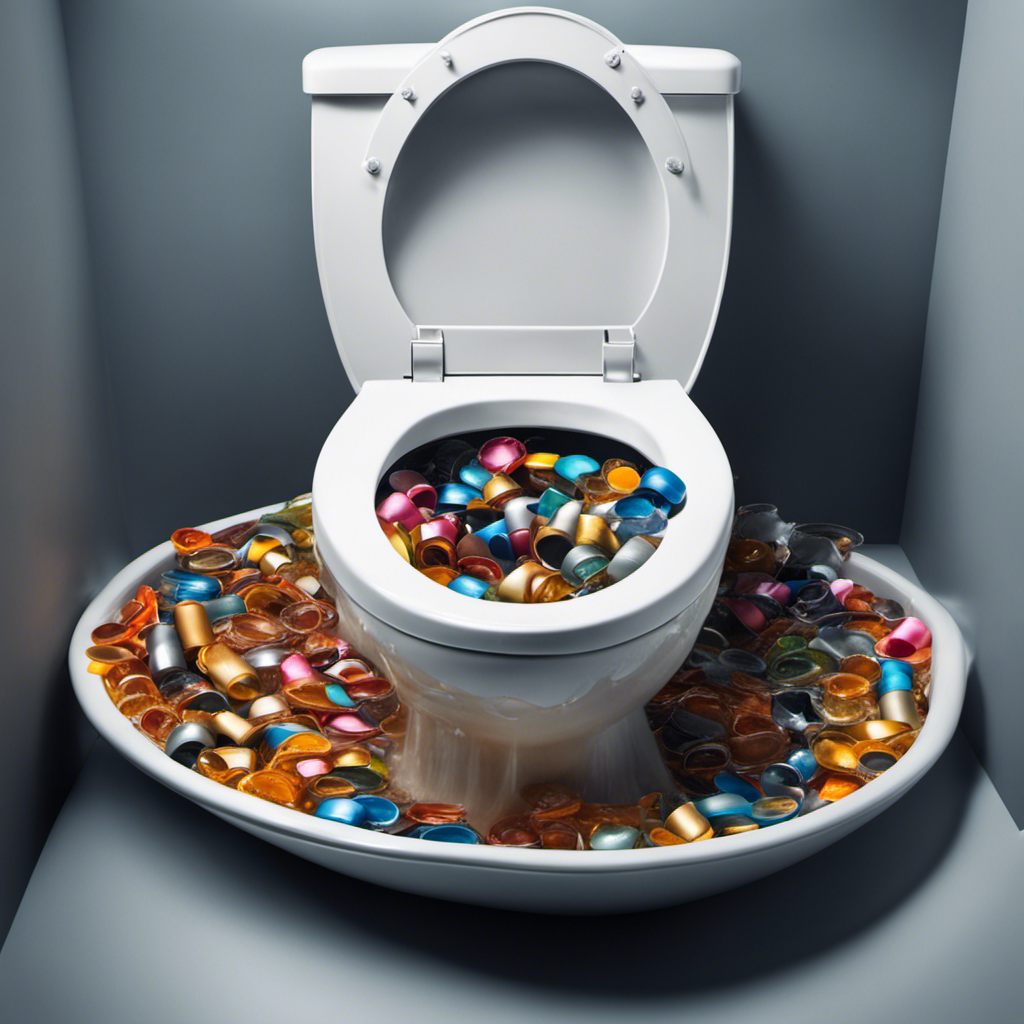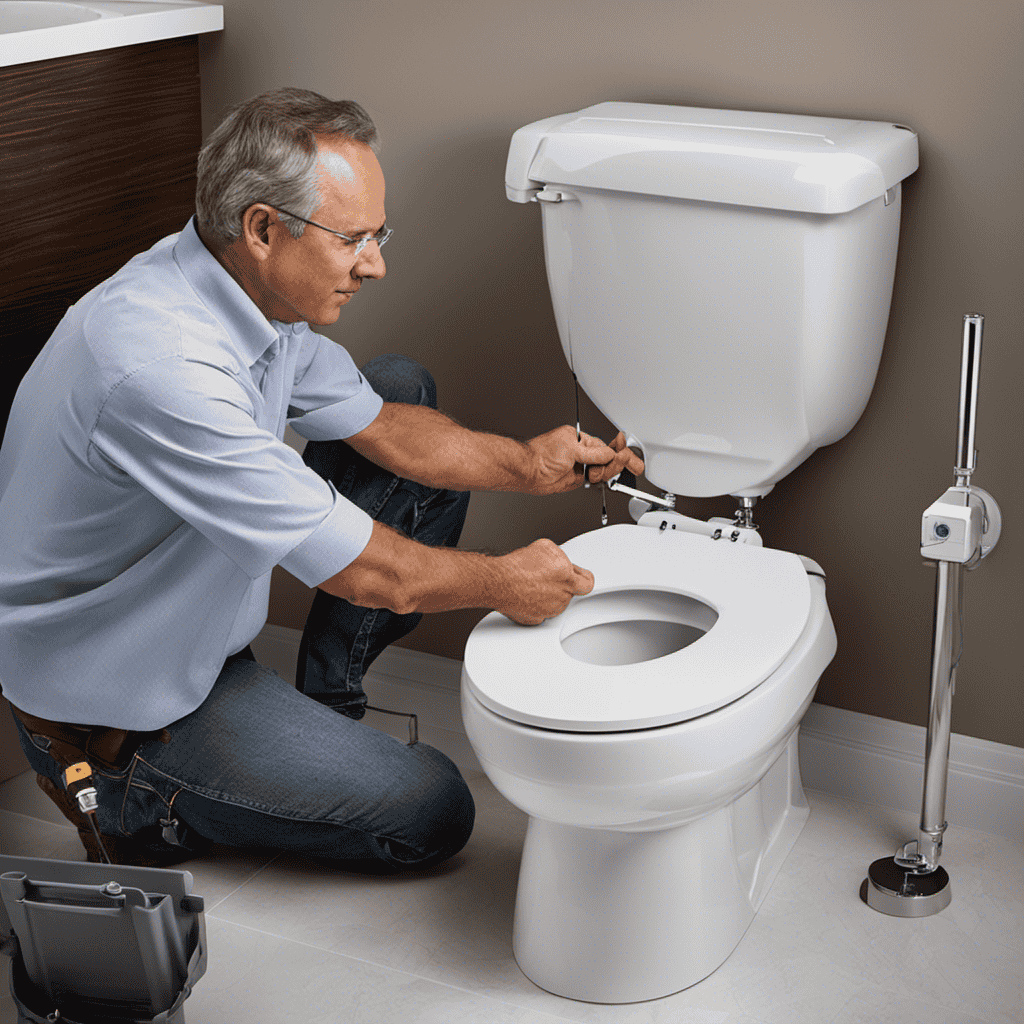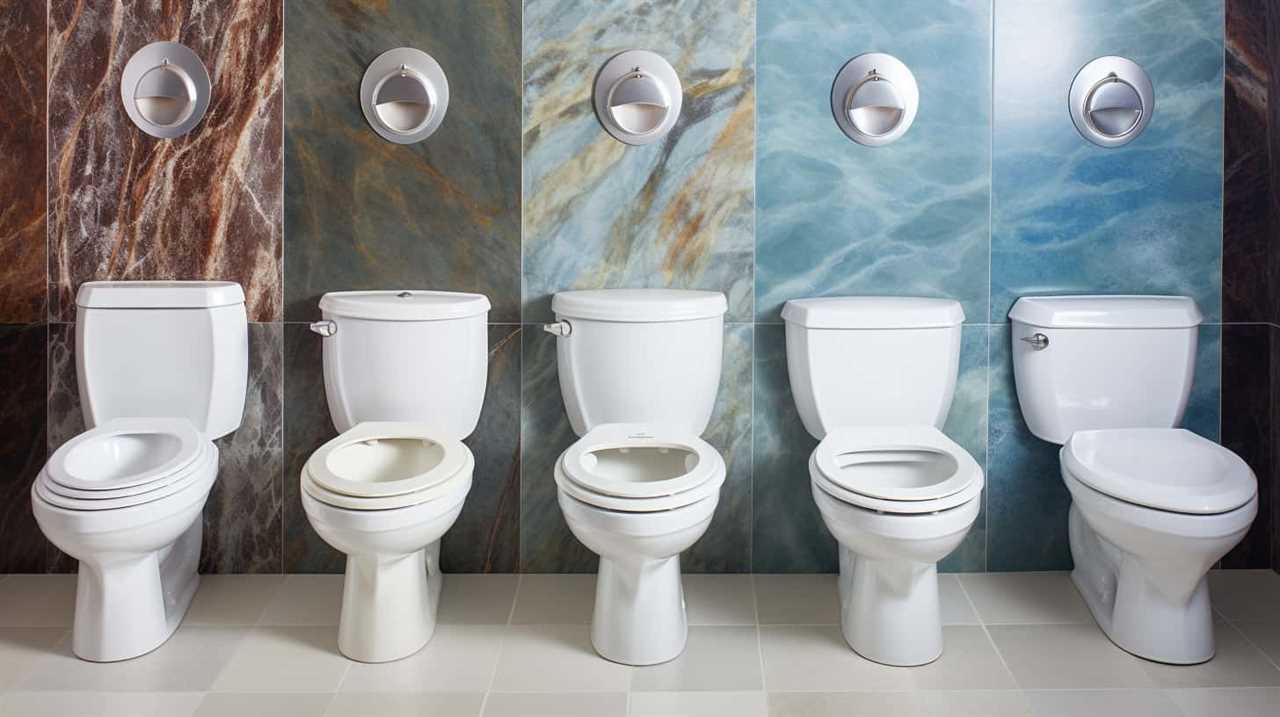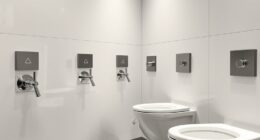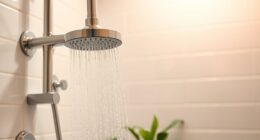Hey there! Ever noticed bubbles in your toilet when the washer drains? Trust me, it’s not a good sign. But don’t fret!
In this article, I’ll walk you through the troubleshooting steps to get to the bottom of this issue. From clogs in the main washing machine drain to blocked vents and improperly installed hosepipes, we’ll cover it all.
So, let’s dive in and find out what’s causing those pesky bubbles in your toilet.
Key Takeaways
- Clogs in the main washing machine drain can cause pressure and gurgling in the toilet. Use a plumber snake or enzyme cleaner to clear the clog.
- Blocked vents can lead to air pressure issues and bubbles in the toilet. Install a two-inch drain with a P-trap or call a plumber for assistance.
- Improperly installed hosepipes can hinder water flow from the washing machine to the toilet. Adjust the hosepipe placement and replace worn-out or damaged hoses.
- Clogged vent pipes can cause bubbles in the toilet. Clean the vent pipe by removing debris from the roof or consider hiring a professional plumber.
Clogs in the Main Washing Machine Drain
I can clear a clog in the main washing machine drain by using a plumber snake or enzyme cleaner.
To prevent future clogs, it’s important to be mindful of what goes down the drain. Avoid pouring grease, coffee grounds, or large amounts of food particles into the sink.
Additionally, using a drain strainer can help catch hair and other debris before it enters the drain.
When choosing the right enzyme cleaner, look for one that is specifically formulated for breaking down organic matter. Read the labels and instructions carefully to ensure it is safe for your plumbing system.
Regularly using an enzyme cleaner can help keep your main washing machine drain clear and prevent future clogs.
Blocked Vents
Installing a two-inch drain with a P-trap enables airflow and prevents air pressure issues. Regular vent pipe maintenance is essential to ensure proper functioning of your plumbing system.
Blocked vents can cause a range of problems, such as bubbles in the toilet when the washer drains. One common sign of a blocked vent is a gurgling sound when water drains from the sink or shower. Another sign is slow drainage in multiple fixtures.
To maintain your vent pipes, it is important to periodically clean them to remove any debris or blockages. This can be done by climbing onto the roof and using a long-handled brush or water to clear the vent pipe.
If you are not comfortable doing this repair, it is best to call a professional plumber to ensure safety and proper maintenance of your plumbing system.
Improperly Installed Hosepipe
Adjusting the hosepipe placement can help ensure proper water drainage from the washing machine. Common hosepipe installation mistakes can hinder the flow of water and cause issues with the toilet.
It is important to install the hosepipe correctly and in the right location. Make sure the hosepipe is installed close to the washing machine with enough slack to allow for movement. This will prevent any kinks or bends that can restrict water flow.
Additionally, check for any worn-out or damaged hosepipes and replace them to avoid drainage problems.
Clogged Vent Pipe
Climbing the roof to unblock the vent pipe using a long-handled brush or water can help resolve the issue of clogged vent pipes. Here are some important steps for vent pipe maintenance and roof debris removal:
-
Inspect the vent pipe: Check for any visible blockages or debris that may be obstructing the airflow.
-
Remove the debris: Use a long-handled brush or water to dislodge and remove any debris or clogs from the vent pipe. Be cautious and ensure your safety while working on the roof.
-
Clear the vent pipe: Once the debris is removed, flush the vent pipe with water to ensure it is completely clear of any remaining blockages.
-
Regular maintenance: It’s recommended to perform regular vent pipe maintenance to prevent future clogs. This includes checking for debris buildup and clearing it periodically.
Clogged Toilet Waste Pipe
Flushing inappropriate items can easily clog the toilet waste pipe, so it’s important to be mindful of what goes down the drain. To clear a clogged toilet waste pipe, there are a few flushing techniques you can try.
One effective method is the hot soapy water method. Start by filling a bucket with hot water and adding a generous amount of dish soap. Carefully pour the hot soapy water into the toilet bowl, ensuring it covers the clog. Let it sit for a few minutes to allow the soap to break down the debris. Then, flush the toilet to see if the clog has cleared.
If not, you can try using a rubber cup plunger to remove any remaining debris. Repeat the hot soapy water flush if necessary. Remember to avoid flushing non-biodegradable items to prevent future clogs.
Community Sewer Problem
Dealing with a community sewer problem can be frustrating, but contacting the local utility provider is the first step toward resolving the issue. Here are some sewer overflow prevention and maintenance tips:
-
Regular Inspections: Schedule regular inspections of the sewer system to identify any potential issues or signs of blockage before they escalate.
-
Proper Disposal: Avoid flushing or pouring anything down the drains that can cause clogs, such as grease, oil, wipes, or sanitary products.
-
Tree Root Control: Tree roots can infiltrate sewer lines and cause blockages. Consider using root barriers or regular root maintenance to prevent this.
-
Stormwater Management: Ensure that stormwater runoff is properly directed away from the sewer system to prevent overwhelming and overflow during heavy rainfall.
Troubleshooting Partial Clogs
When troubleshooting partial clogs in washing machine drains, it’s important to understand the common causes and how to prevent and address these issues in the main drain. Partial clogs can occur due to various reasons such as debris build-up, improper installation, or blocked vent pipes. To prevent these clogs, it’s crucial to avoid flushing inappropriate items down the toilet, ensure proper installation of hosepipes, and regularly clean the vent pipe to maintain airflow. In case of a partial clog, using a plumber snake or enzyme cleaner can help clear the blockage. Additionally, checking for blocked vents and addressing any issues with the community sewer system can also help prevent toilet bubbles when the washer drains. By taking these preventive measures and addressing clogs promptly, you can maintain a smooth and efficient drainage system.
| Common Causes of Partial Clogs in Washing Machine Drains | How to Prevent and Address Partial Clogs in the Main Drain |
|---|---|
| Debris build-up in the drain pipe | Use a plumber snake or enzyme cleaner to clear the clog |
| Improperly installed hosepipe | Adjust the hosepipe to ensure proper water drainage |
| Clogged vent pipe | Clean the vent pipe by removing debris from the roof |
| Flushing inappropriate items down the toilet | Avoid flushing big pieces of paper, cotton balls, non-biodegradable hygiene products, and dental floss |
| Community sewer problem | Contact the local utility provider or plumber for assistance |
Troubleshooting Gurgling Drains
Gurgling sounds coming from the drain are often caused by a narrow route for water drainage. To troubleshoot gurgling drains, it’s important to understand the common causes behind this issue:
-
Clogs in the main washing machine drain: Partial clogs restrict water flow and cause pressure to be redirected into the toilet. Using a plumber snake or enzyme cleaner can help clear the clog effectively.
-
Blocked vents: Water creates an air vacuum, forcing air to escape through the toilet drain. Installing a two-inch drain with a P-trap enables airflow and prevents bubbles in the toilet when the washer drains.
-
Improperly installed hosepipe: The hosepipe drains water from the washing machine through the same system as the toilet. Incorrect installation or placement can hinder water flow. Adjusting the hosepipe and ensuring proper water drainage is essential.
-
Clogged vent pipe: Clogged vent pipes prevent air from escaping, causing bubbles in the toilet. Cleaning the vent pipe by removing debris from the roof can alleviate the issue.
Troubleshooting Improper Hosepipe Installation
I can fix the issue with the hosepipe by adjusting its installation and ensuring proper water drainage. When it comes to troubleshooting improper hosepipe installation, there are a few common mistakes to avoid. First, make sure the hosepipe is installed close to the washing machine with enough slack to allow for movement. This will prevent any kinks or restrictions in the water flow. Additionally, check for any worn-out or damaged hosepipes and replace them if necessary. To ensure proper water drainage, follow these steps: 1) Position the hosepipe at a downward angle to allow gravity to assist in the drainage process. 2) Avoid placing the hosepipe in a position where water can accumulate or pool. 3) Regularly inspect and clean the hosepipe to remove any debris or obstructions that may hinder the water flow. By addressing these issues and implementing proper installation and drainage techniques, you can troubleshoot any problems with your hosepipe.
| Common Mistakes in Hosepipe Installation | Steps to Ensure Proper Water Drainage with Hosepipe Installation |
|---|---|
| – Installing the hosepipe too far from the washing machine | – Position the hosepipe at a downward angle to allow gravity to assist in drainage |
| – Using a hosepipe with kinks or damage | – Avoid placing the hosepipe in a position where water can accumulate or pool |
| – Not providing enough slack in the hosepipe | – Regularly inspect and clean the hosepipe to remove debris or obstructions |
| – Failing to replace worn-out or damaged hosepipes | – Ensure the hosepipe is securely connected to the washing machine and the drainage system |
Frequently Asked Questions
How Can I Prevent Clogs in the Main Washing Machine Drain From Occurring in the First Place?
To prevent clogs in the main washing machine drain, I take preventive measures and regularly maintain the drain. This includes using a plumber snake or enzyme cleaner to clear any debris and ensuring proper installation of the hosepipe.
Are Enzyme Cleaners Safe to Use on All Types of Plumbing Systems?
Enzyme cleaners are safe for most plumbing systems. They effectively break down organic matter without causing damage. However, some individuals may experience potential side effects such as skin irritation or allergic reactions.
Can a Partial Clog in the Main Washing Machine Drain Cause Damage to the Washing Machine?
Yes, a partial clog in the main washing machine drain can cause damage to the washing machine. Regular maintenance, like using enzyme cleaners and clearing clogs with a plumber snake, can help prevent this.
What Are the Signs of a Blocked Vent Pipe, Other Than Bubbles in the Toilet?
Foul odors and gurgling sounds are signs of a blocked vent pipe, in addition to bubbles in the toilet. If you notice these symptoms, it’s important to address the blockage to prevent further issues.
How Can I Determine if the Issue With Toilet Bubbles When the Washer Drains Is a Community Sewer Problem or a Problem Specific to My Home?
Determining responsibility for toilet bubbles when the washer drains can be challenging. Professional plumbing assistance is essential. Local utility providers or plumbers can investigate and fix sewer problems, while checking for community-wide issues caused by rainfall or sewer debris buildup.
Conclusion
In conclusion, dealing with toilet bubbles when the washer drains can be a real headache. There are numerous potential culprits behind this frustrating issue, from clogs in the main washing machine drain to blocked vents and improperly installed hosepipes. Don’t forget about the possibility of a clogged toilet waste pipe or even a community sewer problem.
It’s crucial to tackle these problems promptly to avoid further damage to your plumbing system. Remember, a little troubleshooting can go a long way in keeping your toilet bubble-free!
